A lovely challenge
I really enjoy the challenge of making puff pastry, and in this recipe I’ve developed balances of strength, layers, crispness and fat content.
Use this puff pastry in my sausage roll recipe.
This recipe makes just over 900g of pastry. Pastry can be made the day you need it or a day or two in advance.
Ingredients
- 200g strong white bread flour
- 200g plain flour
- Pinch of salt
- 220g ice cold water
- 300g unsalted butter
Method
- Put the flours and salt in a food processor, switch on and slowly drip in the water to form a dough. Stop the processor, remove the dough to a clean work surface, form into a ball and flatten slightly into a circle. Wrap in film and put in the fridge for at least 30 minutes.
- Put the butter between two sheets of baking paper, or two silicon baking mats, and hit and press down with a rolling pin to form a slab about 15x25cm (6×10 inches) and an even thickness. You want the butter to be malleable but still firm and I find that flattening it into a larger circle, then cutting it in half, trimming the edges and pressing again helps form the slab and give it the right texture. Practically you want the butter and dough to be of a similar texture, so they roll together and form the layers and keeping them both cold makes this process easier.
- Lightly dust a large work surface with plain flour, unwrap the dough circle and place in the centre. Keep the film. Flour a rolling pin and roll the dough into a circle approximately 35cm (14 inches) in diameter.
- Place the butter block in the centre of the circle with the short edge towards you (see fig 1) and fold the dough over the butter leaving the short edges open (fig 2). If you need to trim any dough to cover any gaps use a wet finger to stick any trimmings where you need them.
- Roll the dough lengthways until it is double in length (fig 3). Mark the dough into thirds and fold the top third into the centre and then the bottom third (fig 4). Rotate the dough by 90°, so the folds face you.
- Using your rolling pin gently push down on the open edges to seal them (fig 5).
- Roll the dough out lengthwise till about three times the original size, and once again fold into thirds (fig 6).
- Rotate the dough by 90° and repeat steps 6 and 7. You have now done two ‘turn and folds’ and the dough has 19 layers, 9 layers of butter and 10 of dough. Wrap the dough in the film and put it in the fridge for at least 20 minutes to relax.
- Unwrap the dough and with the folded edge towards you repeat steps 6 and 7. Rotate the dough by 90° and repeat steps 6 and 7 again. You have now done four ‘turn and fold’ and the dough has 163 layers (81 of butter and 82 dough). Wrap the dough in the film and put it in the fridge for at least 20 minutes to relax.
- Repeat step 9, so you do two more ‘turn and fold’. The dough will have 1459 layers (729 butter and 730 dough). Wrap the dough and put it back in the fridge for at least an hour, though it will last several days for when you are ready to use it in a recipe such as sausage rolls!
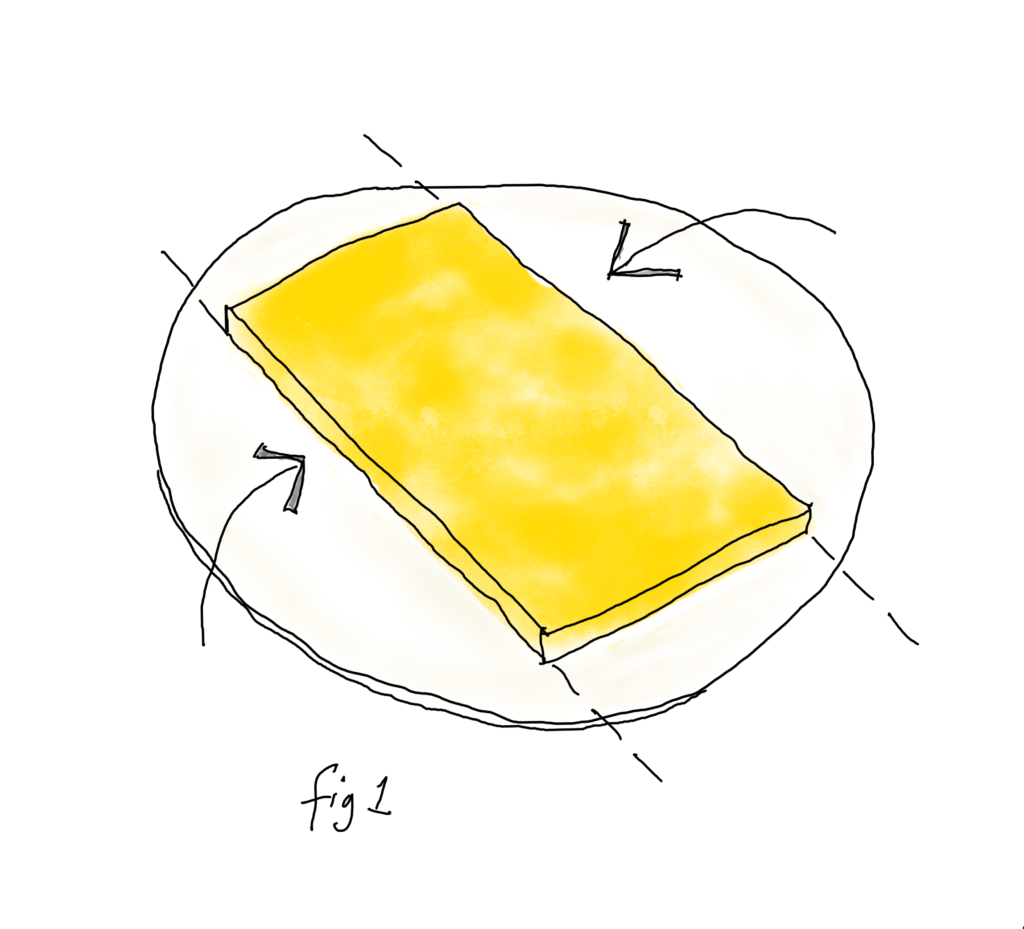 | 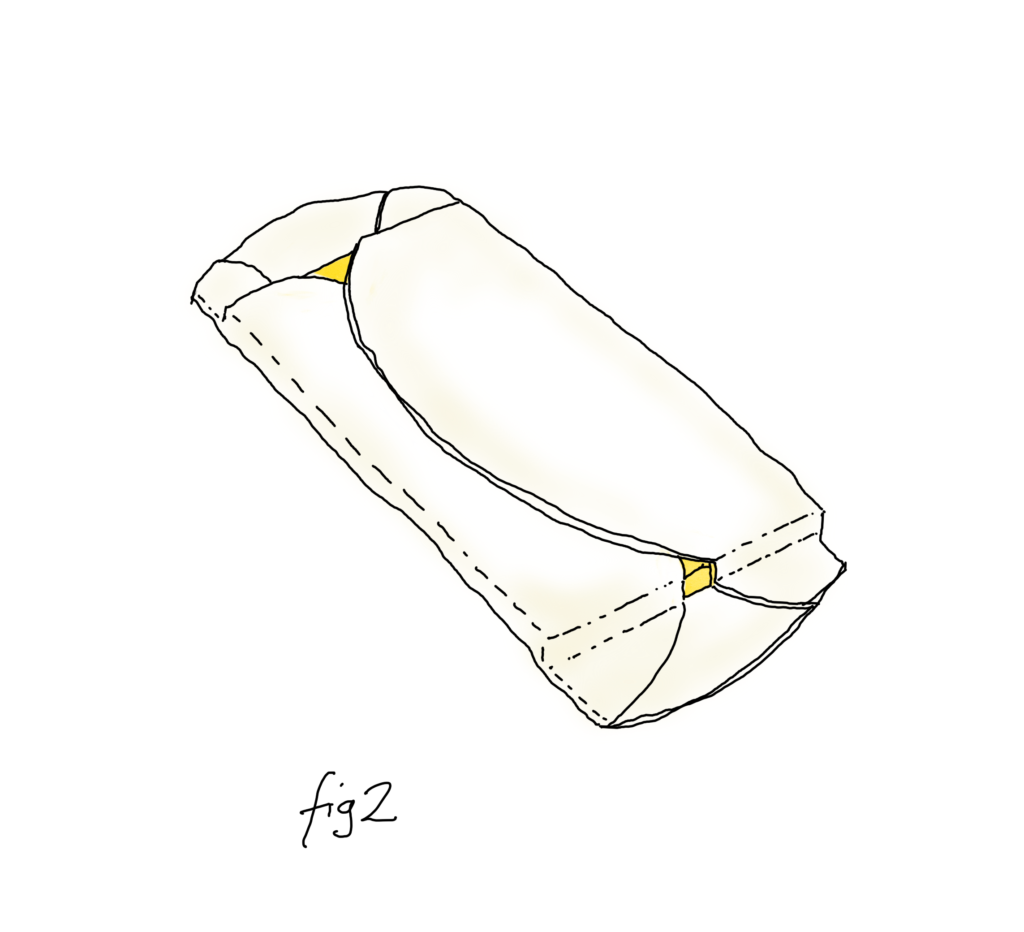 |
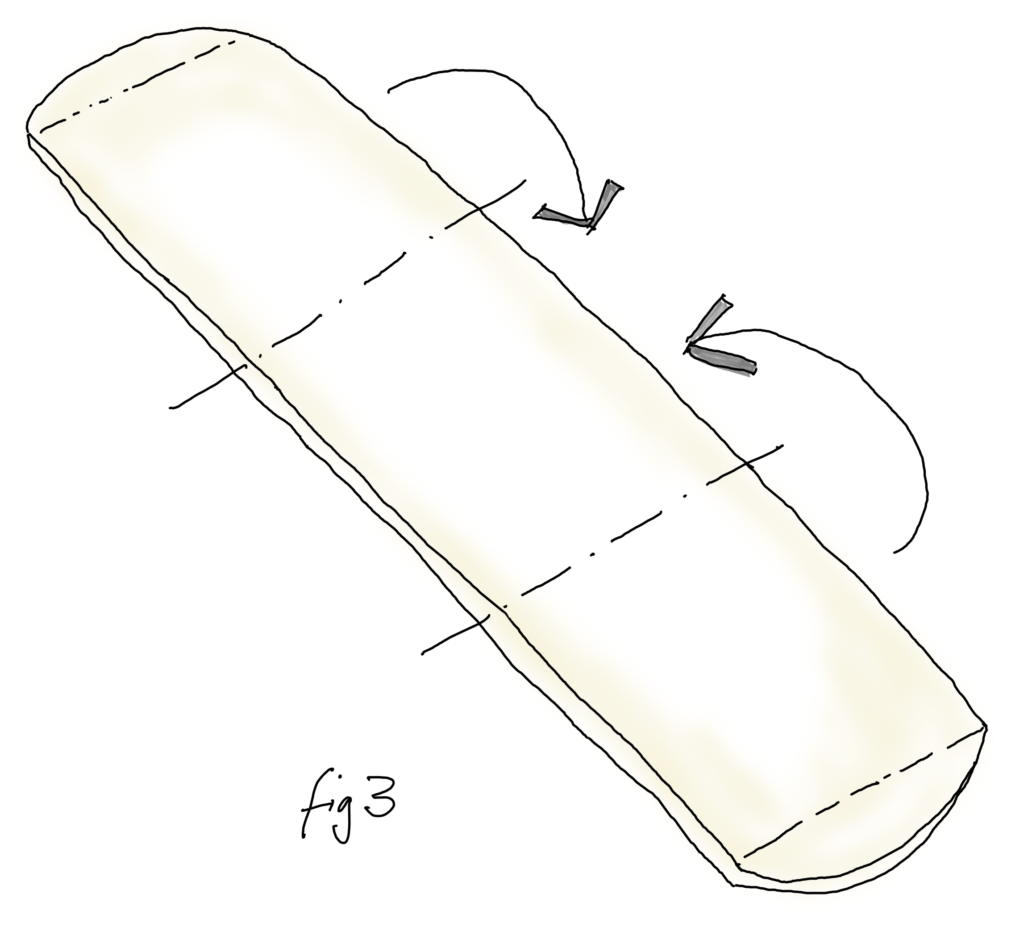 | 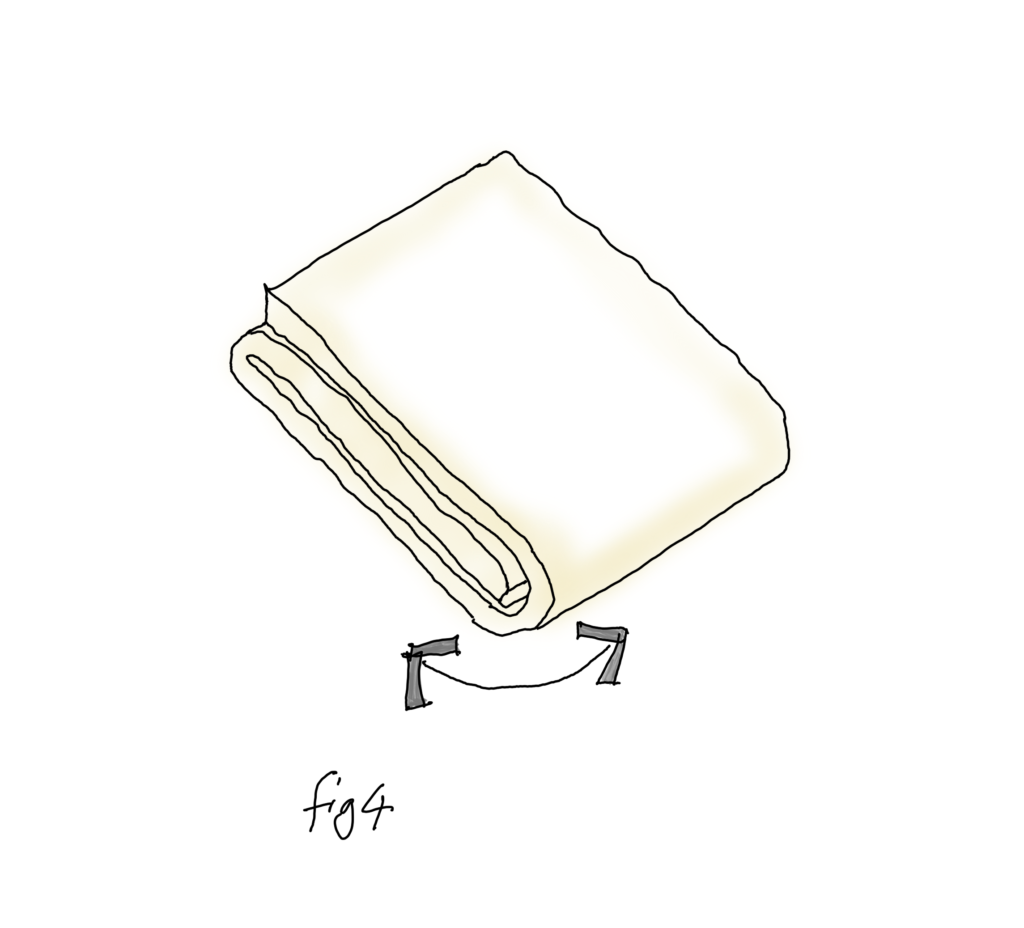 |
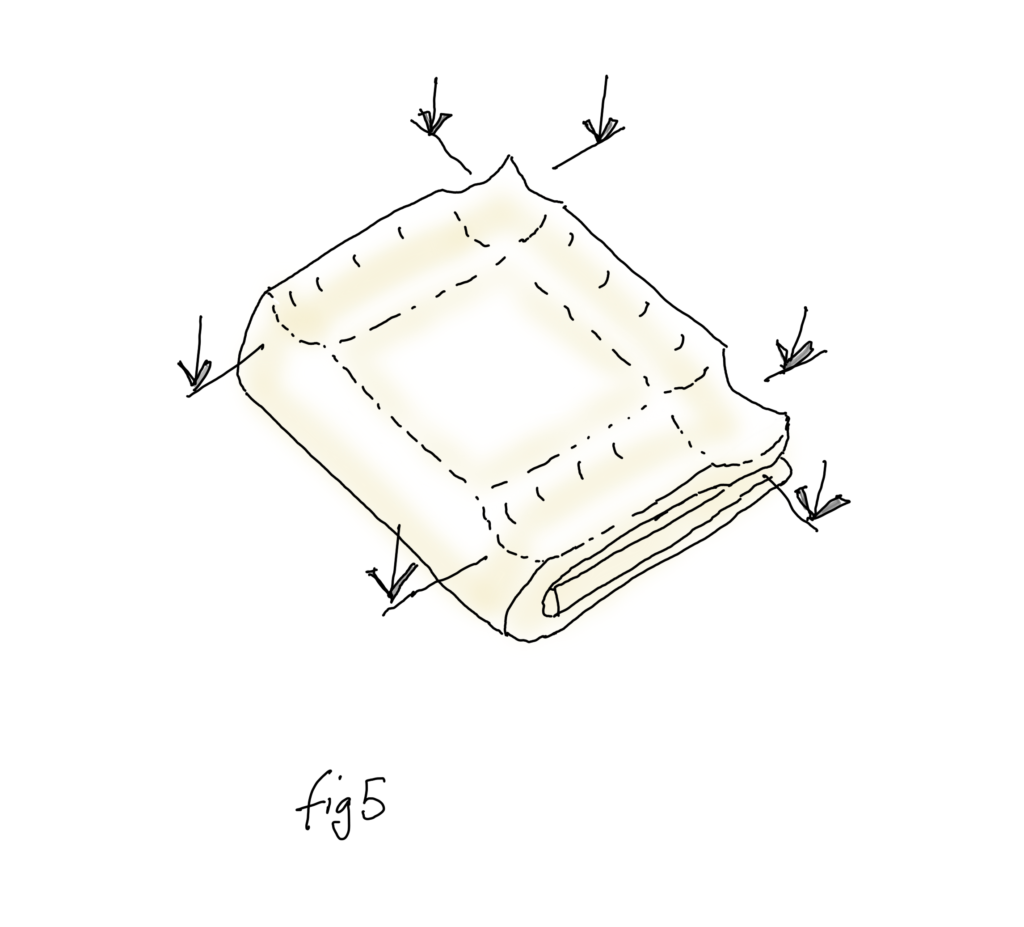 | 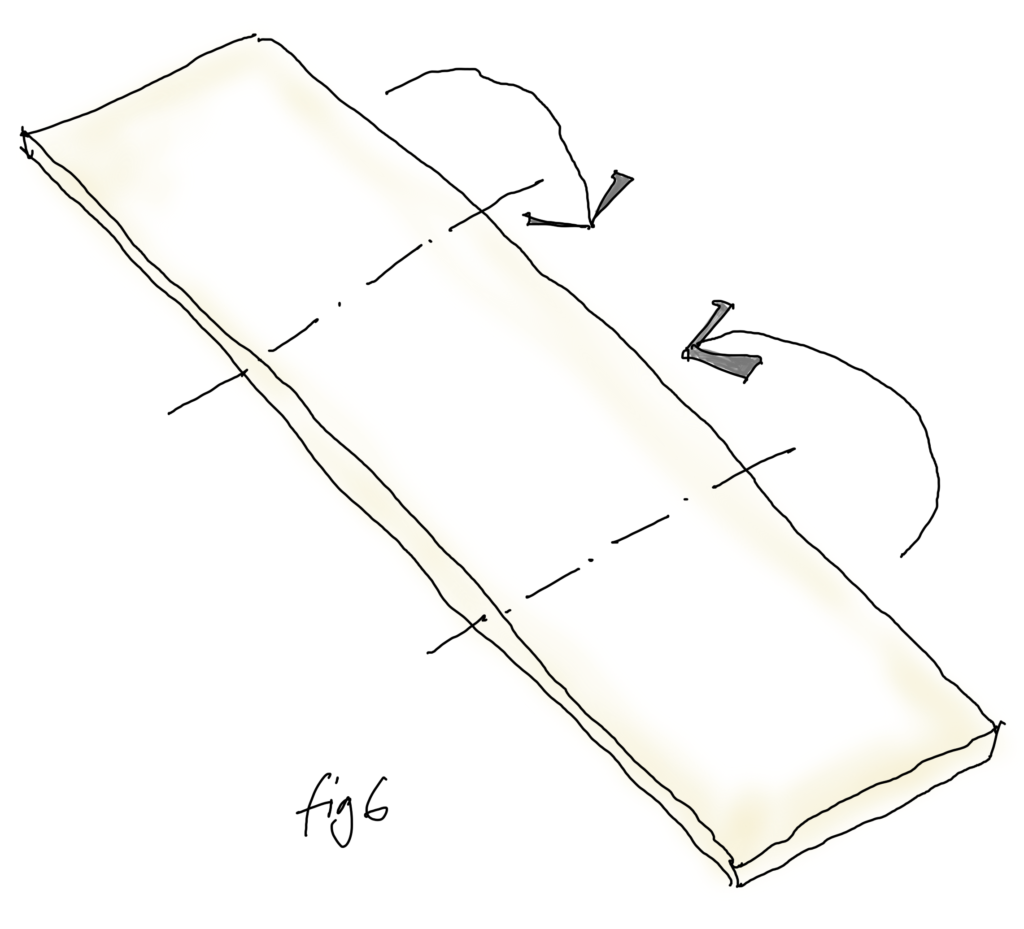 |
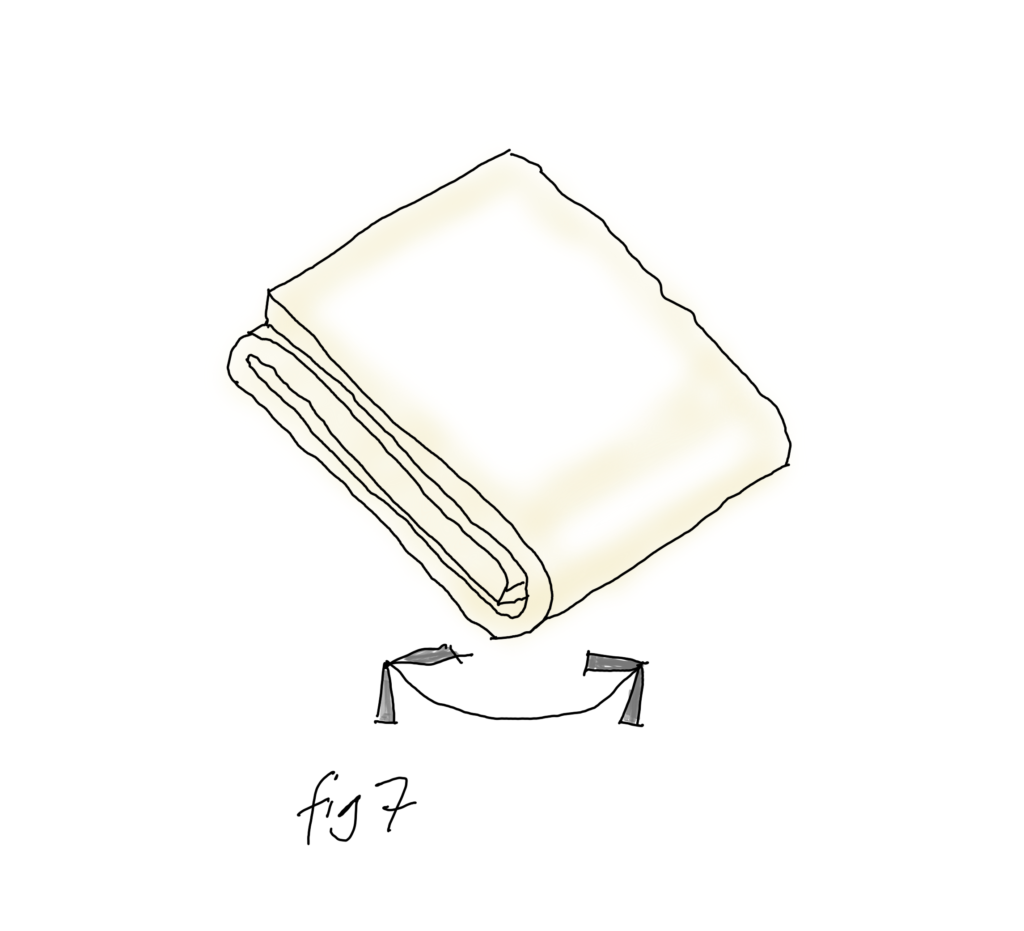 |
Tips
- If you do not have a food processor the dough can be made in a mixer or by hand. Keep everything really cold and handle the dough as little as possible.
- There is a lot of debate about the best butter for puff pastry and the pastry works better with butter with a higher fat content. Personally, I tend to use unsalted President butter for pastry, which I find is readily available, not too expensive and produces reliable results.
- If you can get it, replace the plain flour with French type 45 flour which is specially formulated for fine pastry, but is not typically available in UK supermarkets.